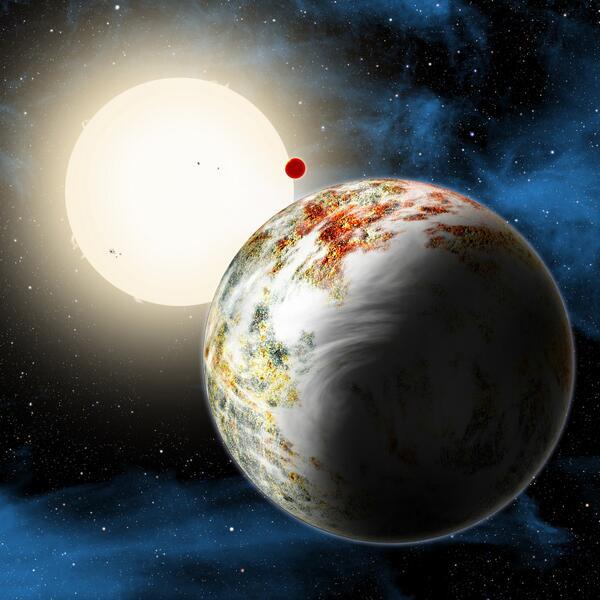NASA: 'Mega-Earth' located 560 light-years away
Twitter/NASAKepler


With 17 times the mass of Earth, a new planet that has been discovered can't even be classified as a "Super-Earth." Instead, the planet — officially named Kepler-10c — is a "Mega-Earth."
NASA announced the planet's discovery on Monday at an astronomy meeting in Boston. Previously, scientists believed that any planet that was bigger than 10 Earth masses would have so much hydrogen gas it would be like Saturn or Jupiter. However, Kepler-10c "suggests that plus-size planets can stay rocky, with clearly defined surfaces, rather than becoming gaseous and bloated," explains The Washington Post's Joel Achenbach.
Natalie Batalha from NASA's Ames Research Center is one of several scientists shocked by this new planet. "Just when you think you've got it all figured out, nature gives you a huge surprise — in this case literally," she said. "Isn't science marvelous?"
The Week
Escape your echo chamber. Get the facts behind the news, plus analysis from multiple perspectives.

Sign up for The Week's Free Newsletters
From our morning news briefing to a weekly Good News Newsletter, get the best of The Week delivered directly to your inbox.
From our morning news briefing to a weekly Good News Newsletter, get the best of The Week delivered directly to your inbox.
Kepler-10c was formed roughly 11 billion years ago, prior to when scientists thought rocky planets existed. It is 560 light-years away, and was discovered by the Kepler telescope, which launched in 2009 and examines small patches of the sky, searching for the dimming of starlight; if there is a regular pattern of dimming, it could mean that a planet is passing over the star. Read more about how Kepler-10c was discovered at The Washington Post.
A free daily email with the biggest news stories of the day – and the best features from TheWeek.com
Catherine Garcia has worked as a senior writer at The Week since 2014. Her writing and reporting have appeared in Entertainment Weekly, The New York Times, Wirecutter, NBC News and "The Book of Jezebel," among others. She's a graduate of the University of Redlands and the Columbia University Graduate School of Journalism.
-
 Son arrested over killing of Rob and Michele Reiner
Son arrested over killing of Rob and Michele ReinerSpeed Read Nick, the 32-year-old son of Hollywood director Rob Reiner, has been booked for the murder of his parents
-
 Rob Reiner, wife dead in ‘apparent homicide’
Rob Reiner, wife dead in ‘apparent homicide’speed read The Reiners, found in their Los Angeles home, ‘had injuries consistent with being stabbed’
-
 Hungary’s Krasznahorkai wins Nobel for literature
Hungary’s Krasznahorkai wins Nobel for literatureSpeed Read László Krasznahorkai is the author of acclaimed novels like ‘The Melancholy of Resistance’ and ‘Satantango’
-
 Primatologist Jane Goodall dies at 91
Primatologist Jane Goodall dies at 91Speed Read She rose to fame following her groundbreaking field research with chimpanzees
-
 Florida erases rainbow crosswalk at Pulse nightclub
Florida erases rainbow crosswalk at Pulse nightclubSpeed Read The colorful crosswalk was outside the former LGBTQ nightclub where 49 people were killed in a 2016 shooting
-
 Trump says Smithsonian too focused on slavery's ills
Trump says Smithsonian too focused on slavery's illsSpeed Read The president would prefer the museum to highlight 'success,' 'brightness' and 'the future'
-
 Trump to host Kennedy Honors for Kiss, Stallone
Trump to host Kennedy Honors for Kiss, StalloneSpeed Read Actor Sylvester Stallone and the glam-rock band Kiss were among those named as this year's inductees
-
 White House seeks to bend Smithsonian to Trump's view
White House seeks to bend Smithsonian to Trump's viewSpeed Read The Smithsonian Institution's 21 museums are under review to ensure their content aligns with the president's interpretation of American history


